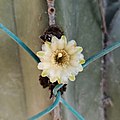
Echinocereus is a genus of ribbed, usually small to medium-sized, cylindrical shaped cacti, comprising about 70 species native to the southern United States and Mexico in very sunny, rocky places. Usually the flowers are large and the fruit edible.
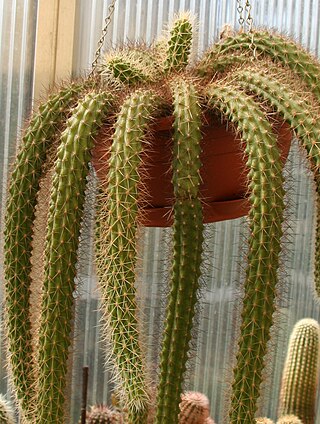
Morangaya is a monotypic genus of ribbed, usually small to medium-sized, cylindrical shaped cacti, that is native to north western Mexico. The only species is Morangaya pensilis. It is found in the mountains and rocky hills.

Lophocereus is a genus of cacti. It has often been merged into the genus Pachycereus, but was separated in a 2019 revision of Pachycereus, and is accepted by Plants of the World Online as of March 2021.

Mitrocereus is a monotypic genus of cacti. Its sole species is Mitrocereus militaris, native to Mexico.
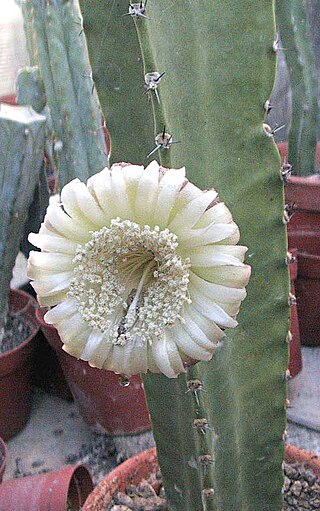
Pterocereus is a monotypic genus of cactus containing the sole species Pterocereus gaumeri.

Isolatocereus is a monotypic genus of flowering plant in the family Cactaceae. The only species is Isolatocereus dumortieri that is found in Mexico.

Aporocactus martianus is a species of cactus found in Oaxaca, Mexico.
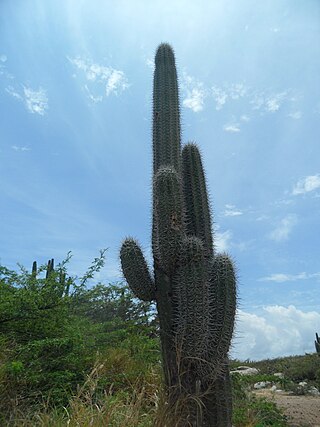
Stenocereus griseus, also known as the Mexican organ pipe, dagger cactus, pitaya, and pitayo de mayo, is a species of cactus.

Ferocactus peninsulae is a barrel cactus in the genus Ferocactus of the family Cactaceae.

Ferocactus robustus is a barrel cactus in the genus Ferocactus of the family Cactaceae.

Lophocereus schottii, the senita cactus, is a species of cactus from southern Arizona and north-western Mexico, particularly Baja California and Sonora. Ultramafic soils facilitate the endemism of plant species and are often associated with their distribution.

Pachycereus pecten-aboriginum is a columnar cactus plant native to Mexico. They can grow up to 15 m (49 ft) high. The trunk of this species is 1.2 to 5.0 m tall and the fruits are large and burr-like. The specific name, pecten-aboriginum, is from the Latin, and means "native combs". It was inspired by the use of the fruits as hair combs.

Cipocereus minensis is a species of Cipocereus found in Minas Gerais, Brazil.

Pachycereus weberi is a columnar cactus plant native to Mexico.

Cephalocereus tetetzo is a species of cactus from Mexico.

Cephalocereus polylophus is a species of cactus endemic to Mexico. Often grown under the synonym Neobuxbaumia polylopha, it is popular with cactus growers and reproduces well in cultivation.

Lophocereus gatesii is a species of plant in the family Cactaceae.
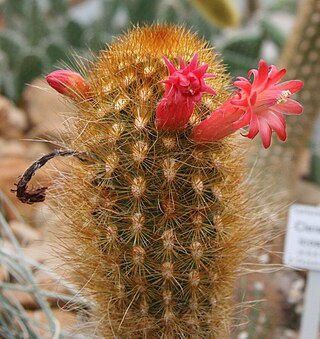
Borzicactus icosagonus is a species of cacti found in Ecuador and Peru.

Cochemiea poselgeri is a species of Cochemiea found in Mexico

Echinocereus sciurus is a species of cactus native to Mexico.




